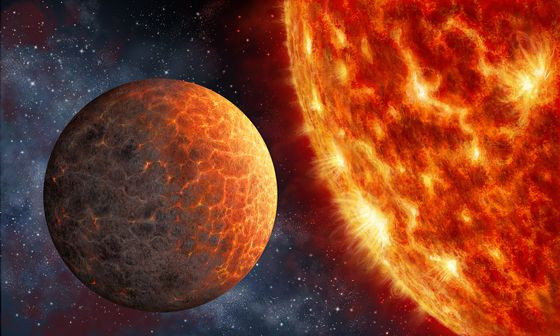Kepler 1649b: Venus-Like Exoplanet Discovery Could Help Scientists Understand Habitable Zones Of Red Dwarfs

Red dwarfs are the most common class of stars in the present-day universe, and the last generation of these objects is likely to remain aglow for 10 trillion years. Given their longevity and abundance, scientists looking for habitable planets beyond our solar system inadvertently tend to stumble upon them.
The most recently discovered exoplanet system — TRAPPIST 1 — also contains, at its center, an ultra-cool dwarf star. Proxima B, a planet that is currently the most promising place in the hunt for extraterrestrial life beyond the solar system, also orbits a red dwarf.
Read: Red Dwarfs: The Cradle Of Alien Life?
This is why, understanding the environment around these stars, which are much cooler than our sun, is crucial in assessing the habitability of planets in their orbit.
On Thursday, a team of astronomers announced, in a study published in the Astronomical Journal, the discovery of a Venus-like exoplanet locked in orbit around a red dwarf just 219 light-years from Earth. In addition to shedding light on what the boundaries of extrasolar habitable zones are like, the discovery, made using NASA’s planet-hunting Kepler Space Telescope, may also provide crucial insights into Venus’ evolution.
“While Earth and Venus evolved to have similar sizes and densities, it remains unclear what factors led to the dramatic divergence of their atmospheres,” the researchers wrote in the paper. “Studying analogs to both Earth and Venus can thus shed light on the limits of habitability and the potential for life on known exoplanets.”
This particular Earth-sized “exo-Venus,” named Kepler 1649b, is locked in a tight orbit around an M dwarf (a class of red dwarfs). Although it is comparable to Venus in terms of size and the amount of light it receives, its orbit is much tighter — taking it around its host star once every nine days.
Venus, by contrast, has an orbital period of 225 days.
“Kepler-1649b is comparable in size and host star to Kepler-186f, an Earth-sized exoplanet discovered to orbit in the habitable zone of an M dwarf. Both planets orbit cool stars and thus exist in systems that are significantly different from that of the terrestrial planets in our solar system,” the researchers wrote in the study. “Furthermore, because Kepler-1649b and Kepler-186f have orbits much closer in than those of Venus and Earth, they may be subject to larger tidal effects from their host star. These effects may include tidal heating, synchronous rotation, and tidal locking, which can produce a significant effects on the planets' seasons and geologic activity.”
Although this is not the first time astronomers have found Venus-like exoplanets around red dwarfs, the discovery comes at a time when several studies and simulations have cast doubts over the habitability of planets around these ultra-cool stars. Further, more detailed observations using the upcoming James Webb Telescope could help scientists better understand and put constraints on the factors that make planets in such systems habitable.
© Copyright IBTimes 2024. All rights reserved.






















